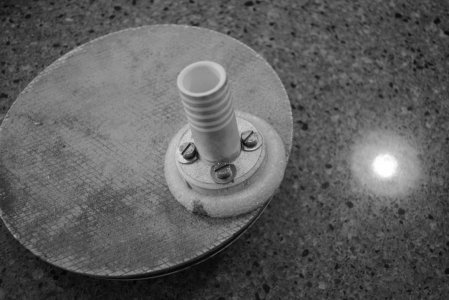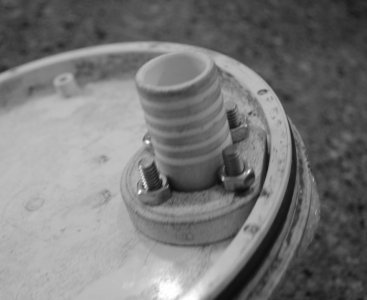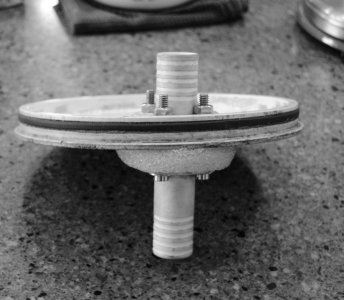- Joined
- Apr 8, 2013
- Messages
- 2,021
While installing the bilge pump the previous owner of my boat just drilled a hole in the weatherdeck and ran a hose thru it. The deck being a glass/wood/glass laminate the wood core was exposed to water. I turned a tapered wood bung and glassed it into the hole after removing the hose. Nearby was an 8 inch deck plate so I made a waterproof fitting to allow connecting a hose on the bottom from the pump and another one on top to exit the hull. I sized the fitting so that the SS hex nuts below the deck would be trapped against the PVC pipe acting like a lock nut. This made it impossible to get a socket on the topside bolt heads so I turned them round and made them slotted screws with my recently completed slitting saw. This was my first real job with the slitting saw and I'm a happy camper.
Attachments
Last edited:



